Book Review: ‘F.P. Journe Invenit et Fecit’ By Jean-Pierre Grosz
F.P. Journe Invenit et Fecit by Jean-Pierre Grosz is a beautifully designed and bound book that narrates the official story of François-Paul Journe, one of the most successful independent watchmakers of our time.
This book not only outlines Journe’s incredible and – dare I say – courageous career. It also delves somewhat into his personal life, which wasn’t always rosy and light. In fact, it was his unruly youth that led him to the field watchmaking.
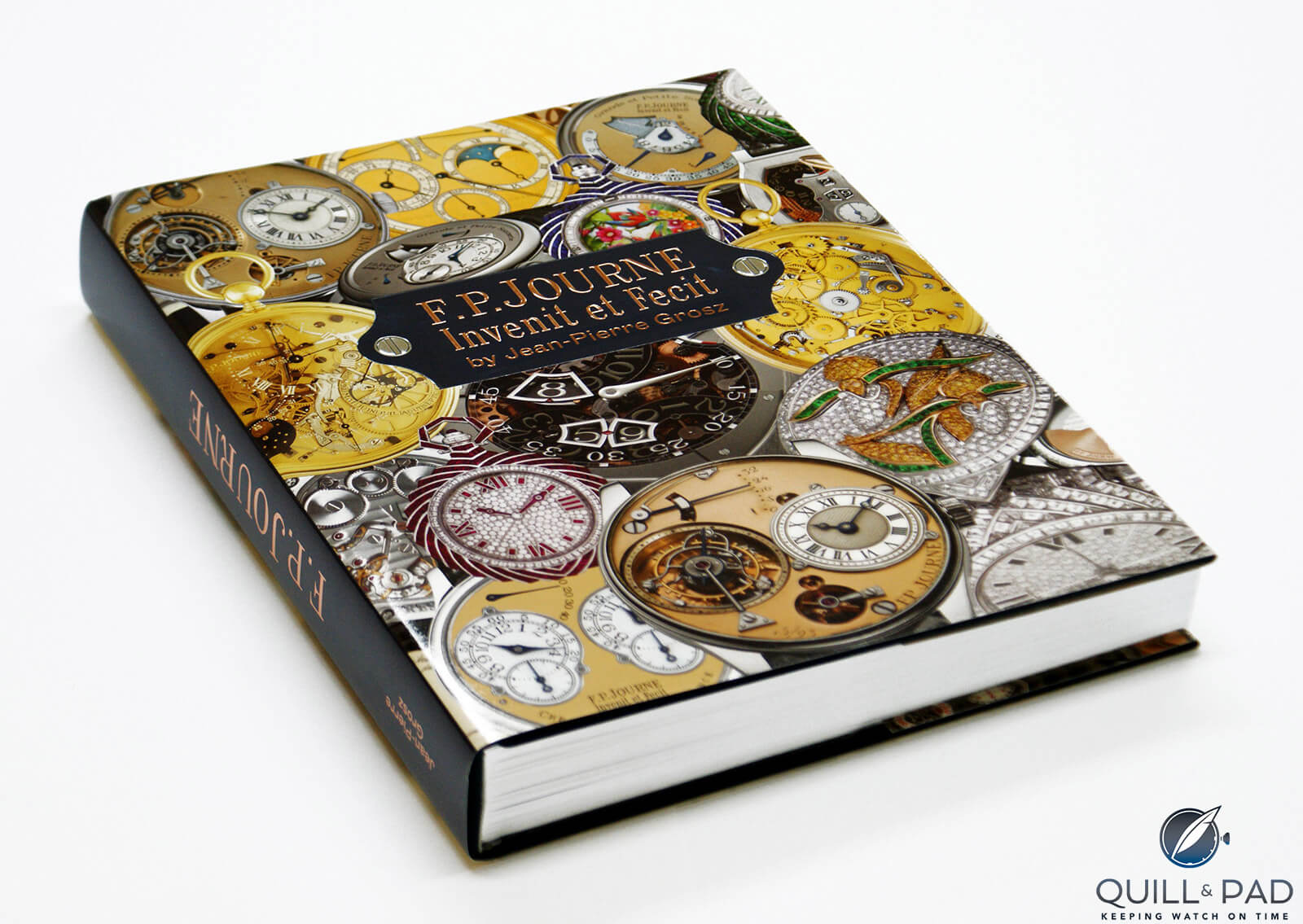
‘F.P. Journe Invenit et Fecit’ by Jean-Pierre Grosz
Written by Jean-Pierre Grosz, who is not a writer in the conventional sense, together with Journe as outlined in Journe’s forward on page 7, this book truly makes for an interesting read. Grosz, a locksmith by trade, has made his living in the world of music, becoming the manager of Marvin Gaye and Ray Charles among others. Grosz wrote 2005’s Ray, mon Ami, which recounts his 27-year-long professional and personal relationship with the American musician.
Journe loved that book and thought of Grosz when he decided to commission the writing of his own life story.
There are two forwards, one by Journe himself thanking both Grosz and his uncle, Michel, without whom the watch industry would be a little poorer today. It was indeed Michel Journe’s example and guidance that led François-Paul to the path he finally chose to take.
The other forward is by François-Paul’s eldest son, Charles. And it represents a rare glimpse into the great watchmaker’s personal life.
F.P. Journe Invenit et Fecit: structure
The 360-page book is divided into 10 chapters, each representing a stage in the life and career of the French watchmaker.
The first chapter begins with his birth in 1957 and takes us through his formative years to 1972.
The second chapter goes from 1972, the year he found watchmaking, through 1973; the third chapter concentrates on the next year until 1974, while the fourth chapter keeps us in this same period, delving into what it took for Journe to finally earn his diploma as a certified watchmaker.
Chapter 5 (1976-1982) chronicles Journe’s first watch, while chapter 6 (1983-1985) describes his beginnings working in the watch industry.
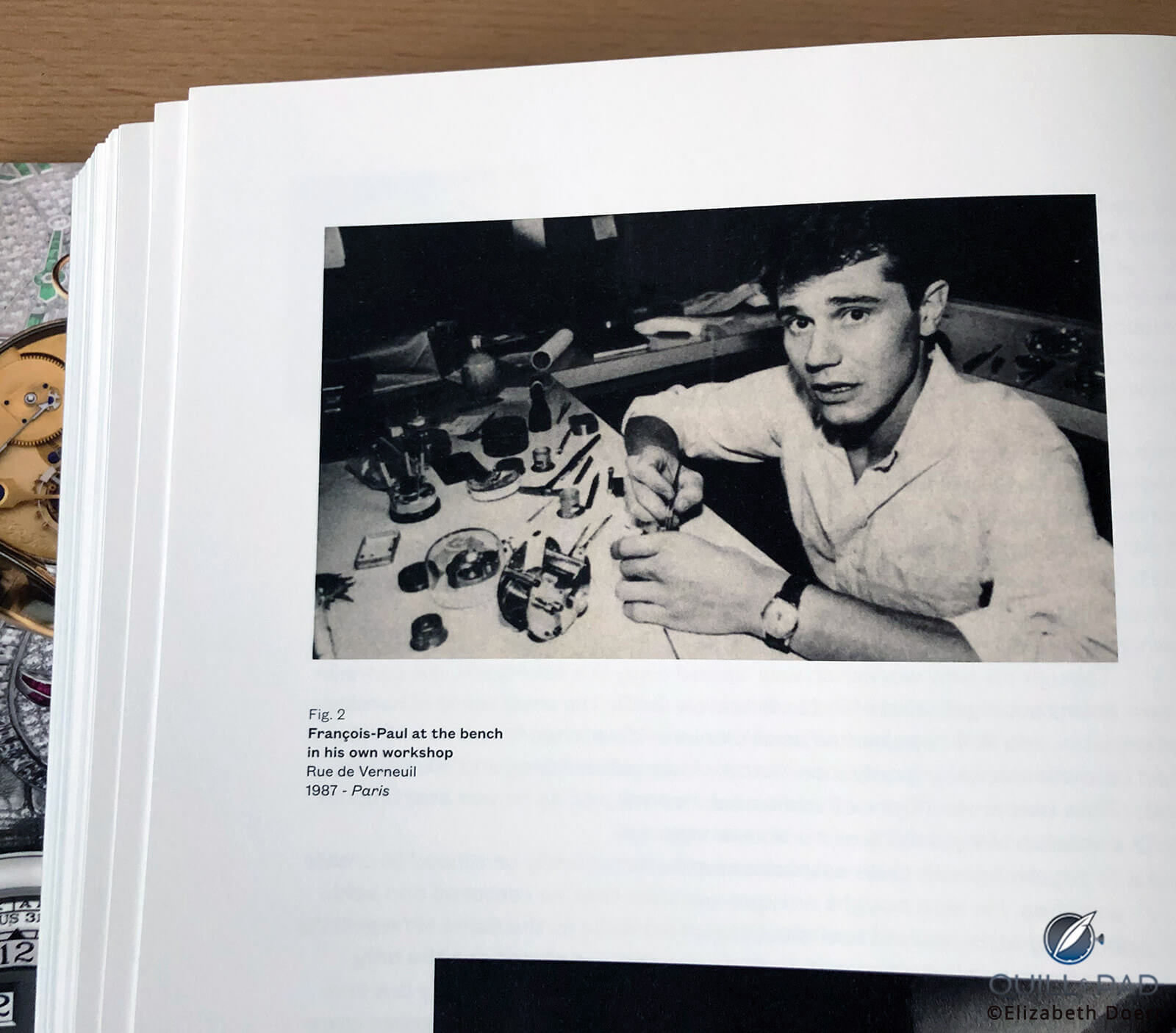
‘F.P. Journe Invenit et Fecit’ provides a rare glimpse into the private world of François-Paul Journe
The seventh chapter – is this number symbolic here? I’m not sure – which takes place from 1985 through 1997, describes how Journe becomes an independent watchmaker, while the eighth (1997-2002) is about his move to Geneva and his “metamorphosis” into the head of a thriving brand.
Chapter 9 (2002-2006) is chiefly about building up his business and the factory building in Geneva, while the final chapter is cryptically entitled “The Future,” but mainly contains information on the current state of the Journe business and collection.
F.P. Journe Invenit et Fecit: content
The first chapter describes Journe’s youth in France, which was significantly influenced by the divorce of his parents, the loving embrace of his mother, grandparents, and later step-father, and the colorful environment of his native Marseille. But also of his difficulties in getting along in a school system that found it hard to accept children who were different from what administrators and teachers considered the norm.
It also details how he found his way to his uncle, Michel Journe, a watch- and clockmaker in Paris – which led him down the path to his present career.
Chapter 4 is where Journe’s study of horology heats up. The chapter is charming, interspersing austere facts associated with his life at the Paris Ecole d’Horlogerie (where he started his third year due to having been expelled from the Marseille school), the wonderful horological surprises found among the treasure to be restored at his uncle’s Paris atelier, and the experiences of any normal teenager.
One passage I found quite charming reads like this: “Sometimes he found his classes very boring indeed. One day, in the middle of a particularly soporific geometry class, he asked despairingly, ‘When is Easter vacation?’ The teacher, to his credit, answered with great aplomb, ‘It’s the first Sunday after the full moon of the spring equinox’.”
But it’s the photo of Journe with his first true love, Evelyne, on page 57 that enchanted me beyond words: how wonderful to see a teenage François-Paul smile so beguilingly and naturally without a seeming care in the world!
On the horological side, the story from chapter 5 onward takes a lovely turn into details of the high-end connoisseur’s world of horology as seen through the eyes of Journe. Historical figures like Cecil (Sam) Clutton and George Daniels appear out of the mist alongside handmade masterpieces by the latter as well as Abraham-Louis Breguet.
It was these pieces and the high-quality conversations that he took part in in Paris with these figures, which included his dear friend Jean-Claude Sabrier, that inspired him to make modern watches. . . . “the antique pieces with extraordinary complications that he had admired in his uncle’s workshop could inspire contemporary creations!” (p. 68).
Chapter 6 describes in painstaking detail how and why Journe began making his own watches. This section is very passionately and interestingly written. The next chapter already sees Journe breaking out and establishing the beginnings of his own brand, albeit still in Paris, and establishing movement/complication supplier THA in Sainte-Croix, Switzerland.
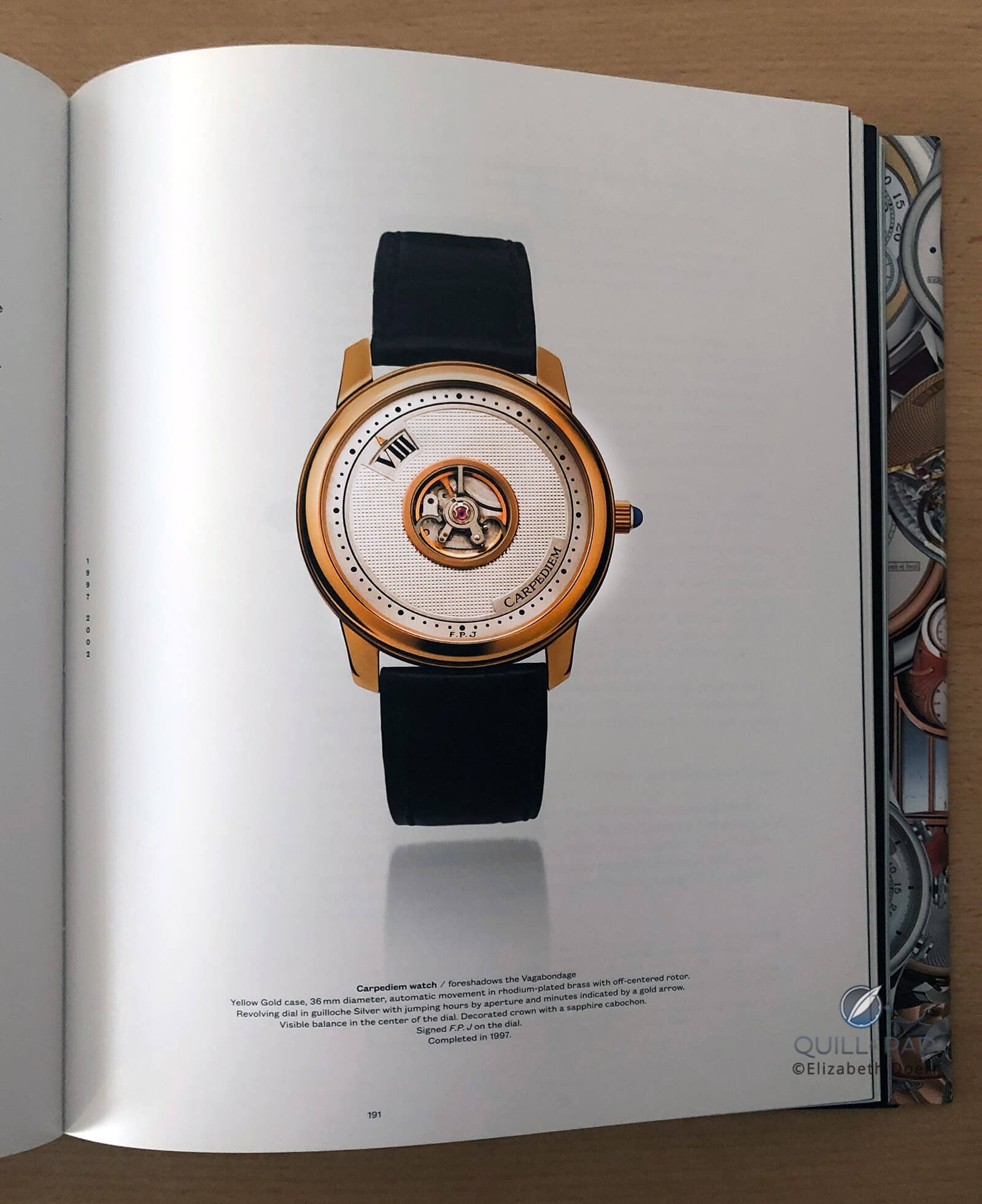
‘F.P. Journe Invenit et Fecit’ by Jean-Pierre Grosz
The rest of the book goes on to describe the watches he’s made and the companies he’s been involved in. A few industry secrets get revealed. A career is explained in a detailed way, intertwined with personal anecdotes and information.
All in all, a truly delightful read, particularly if, as I have, you have been around watches for a few decades and know/remember many of the people mentioned.
F.P. Journe Invenit et Fecit: quality
This book is no less mechanically well-crafted than one of Journe’s beautiful watches: the printing and binding is beautiful, the heavy paper trimmed in silver, and it even includes an old-fashioned bookmark ribbon. Classy to be sure. But I would have expected no less of any product emerging from F.P. Journe Invenit et Fecit.
I cannot vouch for the original French, but the English translation of this book is well done, retaining the personal touch that I imagine the original language had, a tone of familiarity that was needed to describe some of this normally very private man’s personal memories, youth, and development into an entrepreneur.
The translator is unfortunately not credited as far as I can see, which is a shame as that was a job well done.
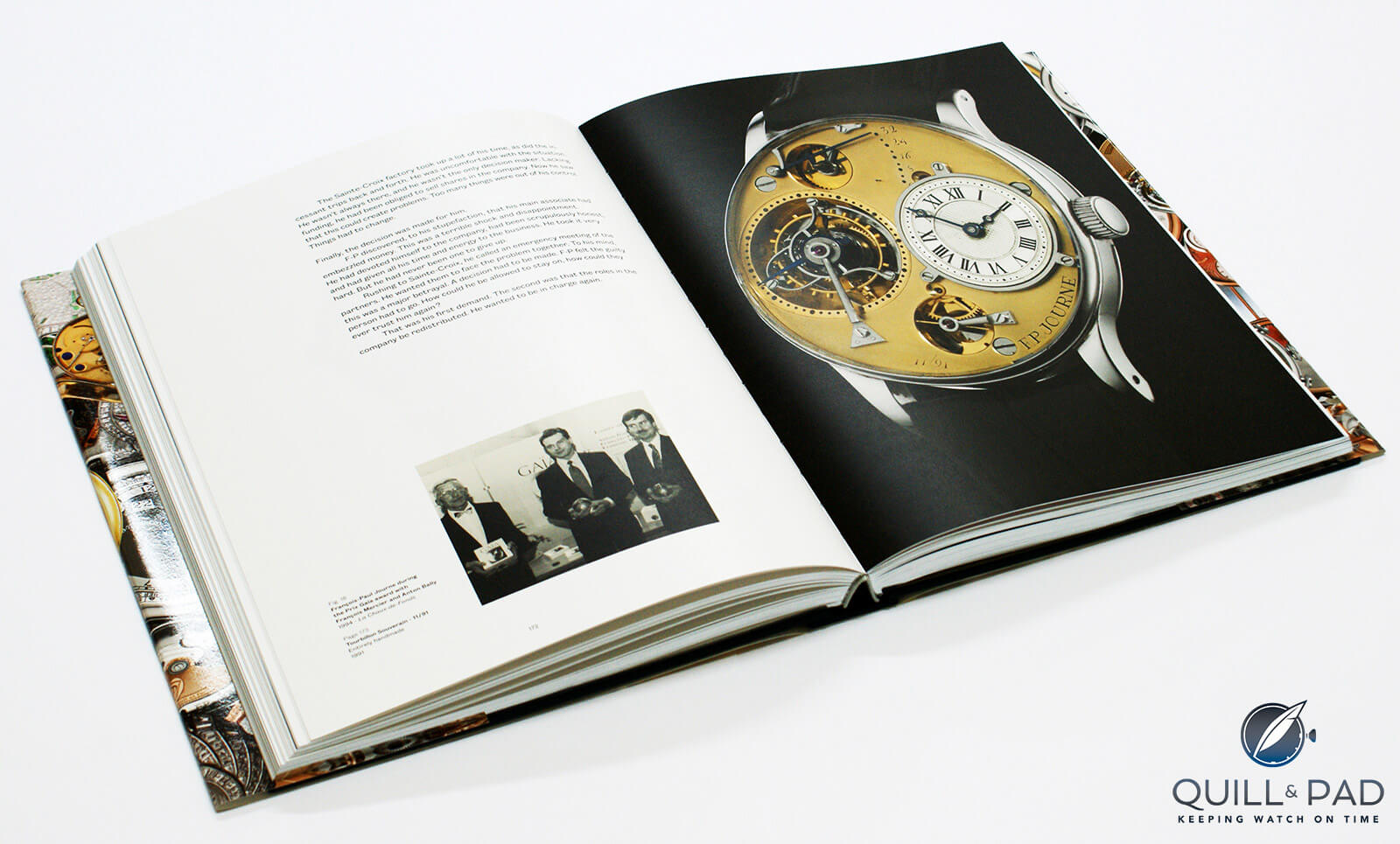
‘F.P. Journe Invenit et Fecit’ by Jean-Pierre Grosz
As in most of today’s books, another pass from a native-tongue copyeditor would have been useful for there are still small errors to be found (most particularly in the captions) that a good copyeditor would have swept away with ease; these errant little elements stick out like a scratch on an otherwise beautifully finished Journe component to my practiced, perfectionist eye – though I would not be surprised at all if a regular reader did not even notice them.
There are plenty of photos; the watch photos – and some of these subjects are the rarest of the rare – often taking up entire, beautiful pages.
The only thing I might have suggested adding would have been an index and a listing of Journe’s watches in chronological order. The final pages were reserved for full-page photography of the current F.P. Journe Invenit et Fecit collection.
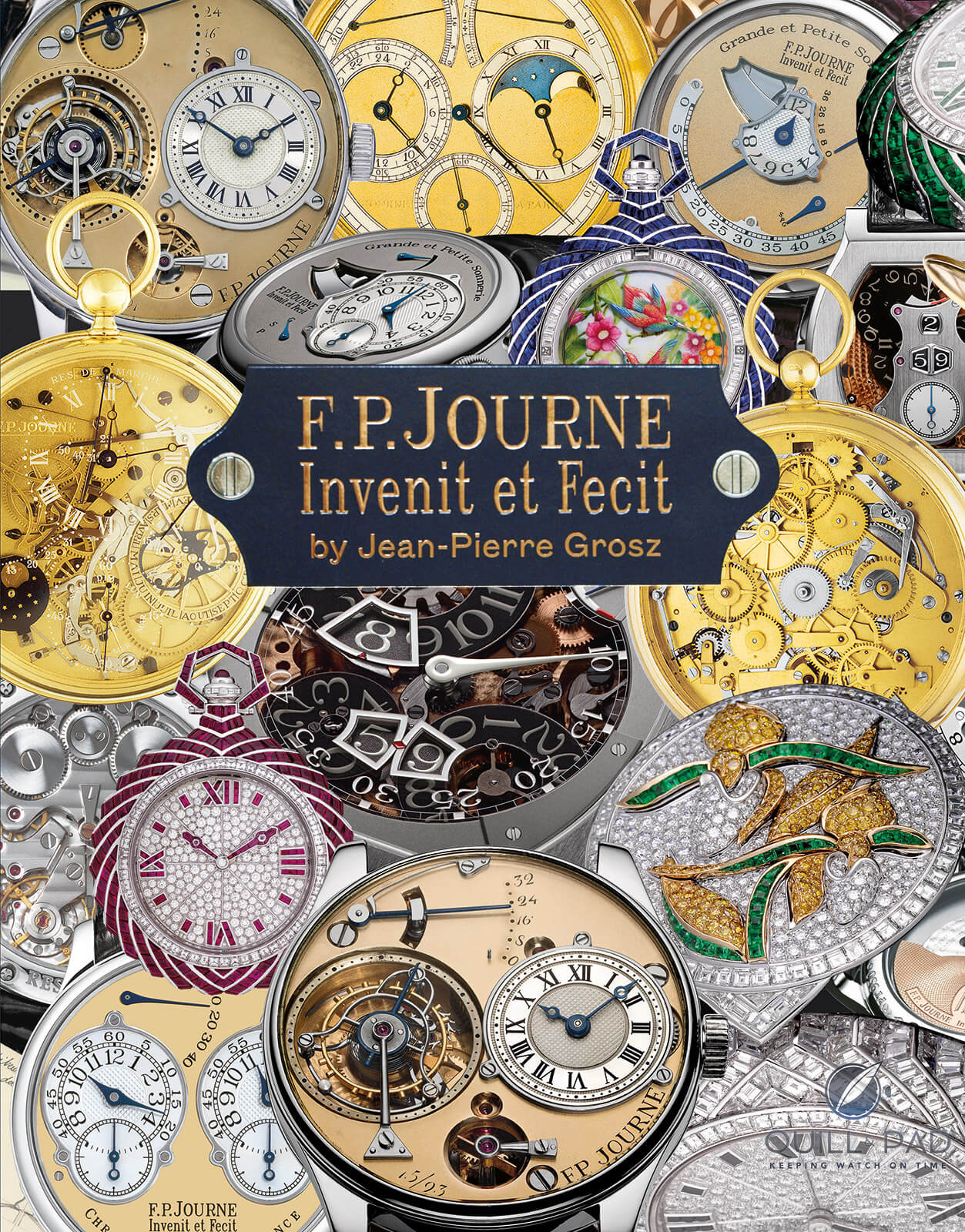
‘F.P. Journe Invenit et Fecit’ by Jean-Pierre Grosz
All in all, I would say that this book is a must-read for any real enthusiast of fine watchmaking in general and independent watchmaking in particular.
For more information and/or to purchase this book: https://watchprint.com/fr/l-univers-des-marques/292-fp-journe-invenit-et-fecit-9782839939942.html#description
You can also get the book from F.F. Journe boutiques.
Quick Facts F.P. Journe Invenit et Fecit
Publisher: self-published
ISBN: 978-3906124247
Page count: 360
Binding: hardcover, 24 x 32 cm
Languages: English / French version available
Price: $260
You may also enjoy:
Book Review: ‘Chronographs For Collectors’ By Sébastien Chaulmontet And Joël Pynson
Book Review: ‘The Magic Of Watches’ By Louis Nardin
Book Review: ‘The Wristwatch Handbook’ By Ryan Schmidt
Book Review: ‘Chasing Time’ By Alistair Gibbons, A Compendium Of Vintage Watches
Book Review: ‘Hashtags And Watches’ By Kristian Haagen
Book Review: ‘George Daniels, A Master Watchmaker & His Art’ By Michael Clerizo
Book Review: ‘The Watch, Thoroughly Revised’ By Gene Stone And Stephen Pulvirent
Leave a Reply
Want to join the discussion?Feel free to contribute!



Tempting.
When I clicked on the link to buy the book, all it shows is the French version. For $1500! Where can I get the English version for $260?
You can get the English version from:
https://watchprint.com/fr/l-univers-des-marques/292-fp-journe-invenit-et-fecit-9782839939942.html#description
Regards, Ian